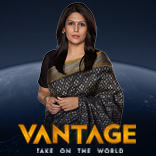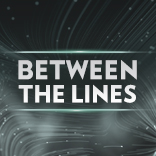Google I/O 2017 keynote live blog: Android Go, Google Lens, Google Photos, Tensor Flow and more
Expectations at this year’s Google I/O are not sky-high this year. We already know that Google’s Android O will be the highlight.
)
And that’s a wrap.
Thank you for reading. Don’t forget to check back later in the day for more information and insights into the announcements made today.
This will be available in the US soon, and will spread to other countries later.
Google for Jobs will even show commute times for potential jobs that you’re looking for.
Applying for jobs will be just one click away.
This uses machine learnings to improve the mechanism for job searches,
Google for Jobs will help people find work.
Google is giving away 1000 petaFLOPS of computing power to researchers
Sundar Pichai is back. He’s talking about Tensor Flow.
This is really cool. Kids can interact with animated 3D objects in real time with AR.
Google Expeditions, a tool for students, is now getting an AR mode.
Google VPS (Visual Positioning System) will even let you, say, find a specific item in a store by directing you to that point.
GPS will get you to the door, VPS will get you to the item you’re looking for.
AR is more powerful when it’s tightly coupled to the real world.
A second generation Tango phone, the Asus Zenfone AR, will go on sale later this year.
Google is working with Lenovo, HTC and Qualcomm to develop a stand-alone headset for VR
Google is working with Lenovo, HTC and Qualcomm to develop a stand-alone headset for VR
Inside-out tracking will enable real-time tracking of the environment without fancy, expensive trackers.
Inside-out tracking will enable real-time tracking of the environment without fancy, expensive trackers.
Daydream will come to new devices. LG’s next flagship devices will support Daydream, as will the Samsung Galaxty S8 via a software update later this year.
Clay Bavor, VP VR is here to talk about VR.
This is how we’ll bring computing to the next billion devices.
A set of best practices is now listed under ‘Building for Billions’ on Google’s developer site. This will help developers build apps and services optimised for low-end devices.
“Google apps is getting Go-ified”
GBoard supports 22 Indian languages and supports phonetic transliteration.
YouTube Go can give you a sneak peak of a video before you play a video. You can even select a video and view quality options and bandwidth options.
Better yet, you can share a saved video with peer-to-peer sharing, reducing data usage.
There’s an API that carriers can use to better inform users on data usage. Chrome data saver features will be turned on by default in Android Go.
The OS’ system UI and Kernel will run smoothly on devices with 512 MB to 1 GB of memory.
We’re building a new experience for entry-level devices. This will be called Android Go.
Apps will be rebuilt to support lighter apps. A new app store will also be available for these types of apps.
This will support devices with 1 GB or less of memory.
Android devices need to be more affordable. India has more Android users than the US after all, says Google.
The first beta release of Android O is available today.
Kotlin is now an officially supported language in Android!
Developers can use Android Studio to profile their apps and see the resources they consume and how they’re consuming them.
There will be tighter control on background apps. Finally, iOS-style restrictions to background apps are coming to Android.
This should improve battery life.
“The single biggest visible change in Android is boot time”
Boot time will be twice as fast on the Pixel. App load times are also faster.
Google Sheets will also be faster.
Google Play Protect will scan all your apps on your device as well.
Machine learning is used to scan apps uploaded to the Play Store for enhanced security.
Tensor Flow is Google’s machine learning API.
TensorFlowLite will enable lightweight machine learning capabilities.
Machine Learning might actually kill selection handles. Double tap in the middle of an address and it will select the whole address and even throw up a Google Maps link. The same applies to mobile numbers, names of restaurants and businesses, etc.
Autofill for apps is another new feature. You can use, say, login data saved on Chrome, in a specific app.
Notification Dots are a new way for app developers to indicate activity in apps.
This is like iOS notifications. You can also long-press app icons to view the app-specific notification. Again, this is like iOS’ 3D Touch implementation.
Android O’s picture-in-picture mode is being demoed. It’s like YouTube’s picture-in-picture mode, but it’s integrated into the OS rather than just YouTube
There are 2 billion Android-powered phones.
Android Wear 2.0 is being used by 20+ manufacturers
Android Auto is seeing rapid growth.
Android TV is seeing 1 million device activations every two months.
Android Things has thousands of developers in 60 countries developing apps
Chromebooks comprise of 60% of K-12 laptops sold in the US.
Android users 82 billion apps and games last year.
Phew
Dave Burke is VP of engineering of Android
Finally, the moment we’ve really been waiting for. Dave Burke is here to talk about Android
YouTube will match the Slo Mo Guys’ earnings by 100x to support children in need of prosthetics around the world.
You purchase a Super Chat for a certain amount of money and post it. This chat message will stand out from the rest of the chat messages on live streams.
Super Chats API adds support for real life interactions in the real world.
When Macdonald sends the next Super Chat, it will trigger a horn and lights and the Slo Mo Guys will be bombarded by water balloon.
The Slo-Mo guys are at I/O!
The number of creators live streaming on YouTube has grown 4x.
We’re now introducing a feature called Super Chat. Fans can purchase these Super Chats, helping creators earn money.
Barbara Macdonald, Product Manager, YouTube is on stage.
You can use your TV remote to pan around 360-degree videos.
YouTube is introducing 360-degree videos on the TV.
While 60 percent of viewers view YouTube on mobile, viewership on TV is increasing at a rate of over 90 percent.
YouTube is different from traditional media because:
- It’s open. Anyone can upload and video. Openness leads to important conversations.
- It’s a two-way conversation. Viewers can interact with creators and build communities.
- Video is on-demand and available on any screen.
The incredible diversity of content is what makes YouTube special.
Susan Wojcicki, CEO, YouTube is here to discuss YouTube.
Google Lens is coming to Google Photos.
Google Lens will identify the photos you took. It might give you timings for a tour, information about an art installation, etc.
Lens will roll out later this year.
Everyone at I/O will get a free, hard cover photo book. *sigh*
Photo Books are only available in the US for now.
Photo Books can be created with machine learning. These ‘books’ will pick your best photos and have them printed and shipped to you as a, well, book.
Now you can spend less time worrying about sharing your memories. You can enjoy simply enjoy them better.
Suggested Photos will roll out over the coming weeks.
There’s no need to worry about who’s phone was used to take photos, says Google.
You can also automatically save photos from shared libraries to your own library.
Shared libraries will share your photos and videos automatically with whoever you want to share them with.
For example, you can automatically share photos of your kids with your wife.
Friends can even add to related albums.
With suggested sharing, you need do nothing more than simply tap ‘share’ once the AI picks the photos for you.
Google Photos will make us “less terrible people”, Google introduces suggested sharing.
Machine learning will look at your photos and recommend photos that you can share and who you can share them with.
The days of the automated social media feed are not far off.
Google has over 500 million monthly active users uploading over 1.2 billion photos and videos a day.
Anil Sabharwal, VP, Photos is here to talk about Google Photos.
You can even say, “OK Google, turn off the TV”, and it’ll do that.
Google can send you information to your relevant device. If you need directions, for example, they’ll be sent directly to your phone.
Assistant can also show you your calendar on your TV. Again, voice detection means that it’ll show the appropriate information on the appropriate device.
Spotify integration is coming to Google Home.
Assistant recognises voices. So you say, “Call mom”, it’ll call your mom, not someone else’s mom.
Assistant recognises voices. So you say, “Call mom”, it’ll call your mom, not someone else’s mom.
These demos must be triggering Google devices everywhere!
Hands-free calling is coming to Google Home. You can call any mobile phone or landline in the US or Canada for free.
Google can give you traffic updates, reminders, flight status changes, etc.
Google Home is launching in six new countries. Sadly, India is not in that list yet.
Rishi Chandra, Vice President, Home Products is on stage to talk about Google Home.
Even as a new customer to a new service, using Google Assistant, you can just place an order without registering, sharing your address, payment information, etc., with everyone.
Basically, Google Assistant will give you more control over the data you share.
Google Assistant can now include transaction information. This means that you can order food, shop, etc., from within Google Assistant.
People can now access Google features from anywhere. They can even pick up where they left off.
Valerie Nygaard, Product Manager, Assistant is on stage.
Assistant has been opened to third-party developers.
The Google SDK will let anyone build Google Assistant into anything.
Huffman: Google Assistant is now available on iPhone.
*The crowd goes wild*
Point Assistant at a sign, and it’ll recognise events, shows, bands, etc. It’ll even throw up contextual cards, giving you the ability to save the event schedule, listen to a sample of audio from the band, etc.
In a demo, Assistant looked at text in Japanese, translated it, and responded to related queries without any additional information.
With Google Lens, Assistant will be able to talk to you about what you see.
You can now type to interact with Google Assistant. Thank you, Google.
Assistant should be the easiest way to accomplish tasks. This can only happen conversationally. 70 percent of requests are conversational.
Assistant will become even more conversational.
Huffman: Assistant simplifies all the technologies in your life. It’s your own, individual Google.
Scott Huffman, VP of engineering of Assistant is on stage.
An “OK, Google” filled ad, people’s phones and Home devices must be going off in over 80 countries around the world.
Pichai: We’re making impressive progress in applied machine learning, and applying it across all our products.
DNA sequencing, drug discovery, advances in material sciences, etc. are some potential uses of AI.
Pichai: We’re using machine learning to provide tools for people to do what they do better.
The potential for this type of AI is immense. For example, we’re using it to improve healthcare.
Google is using reinforcement learning to design neural nets. Neural nets are designing better neural nets.
Pichai says that it’s like Inception, and that we must “go deeper”.
Google.ai will combine all of Google’s AI efforts.
Google uses TPU pods in its data centres. Each TPU can handle 1.8 trillion FLOPS (a measure of computing ability).
For comparison, the Xbox Scorpio will manage 6 TFLOPS.
Pichai: Each one of our machine translation models takes about 3 billion words a week on hundreds of GPUs.
Pichai: We’re now looking at AI-first data centres.
Pichai: All of Google was built because we understood text and web pages. Now, with our understanding images, it has a profound impact on our vision.
Google Lens announced. It’s a set of AI-based vision tools.
Google Lens will, say, identify a flower just by pointing your phone at it. You can even get a username and password of a router by just pointing at it.
This is true Augmented Reality, and it’s coming to every smartphone.
We can use AI to reduce noise in images, remove obstructions in images (think content aware fill in Photoshop).
Pichai: Users are responding to computers in a more natural way.
Smart reply is rolling out to all Gmail users today.
Smart reply gives you contextual, conversational, machine generated replies to Gmail
Pichai: We’ve gone from mobile first to AI first. We’re rethinking all our products. We’re using machine learning everywhere.
There are now 2 billion active Android devices in the world!
Every day, people watch over 1 billion hours of video. Every day, people navigate over 1 billion miles on Google Maps. Every week, there are 8 billion objects uploaded to Google Drive. Every day, people upload 1.5 billion photos to Google Photos.
Sundar Pichai is on stage!
“What will your idea become?”, asks Google
Google, you’re weird.
There’s a giant, walking egg on the screen, and it’s patting a baby egg.
The event’s finally started.
Google now says that 6,000 bubbles have been blown from Mountain View, US. Woohoo? When’s the event going to start?
Blue won, apparently. Whatever that means.
We have no idea what the bubble game intends to achieve. But hey, it’s something to pass the time, right?
Find us on YouTube






)
)
)
)
)
)
)
)